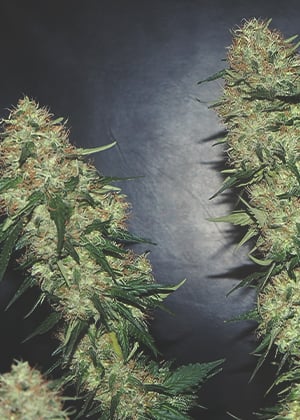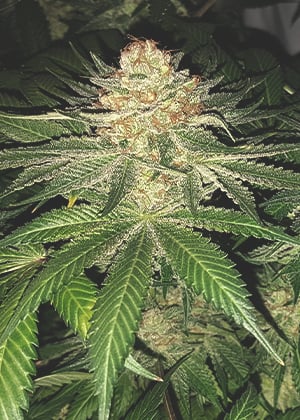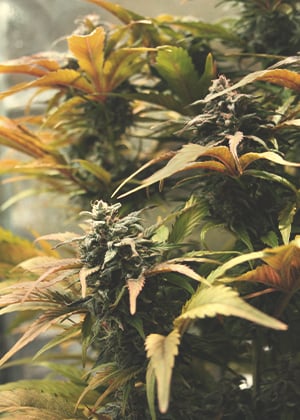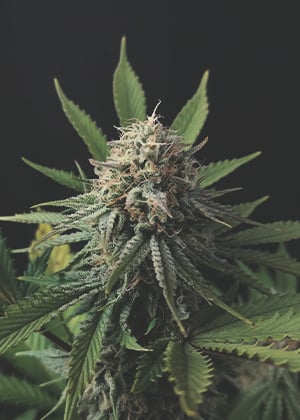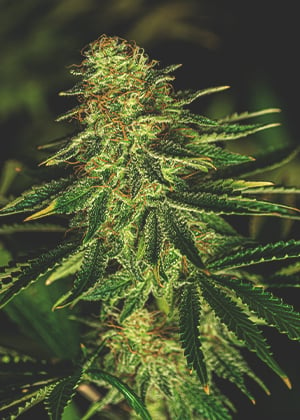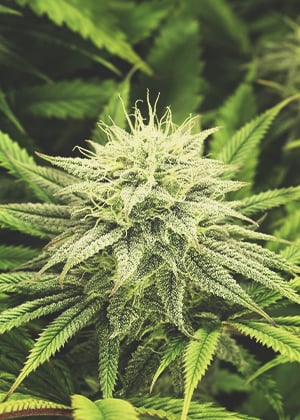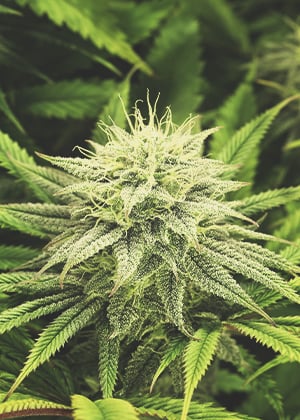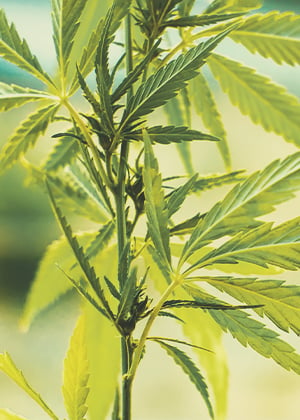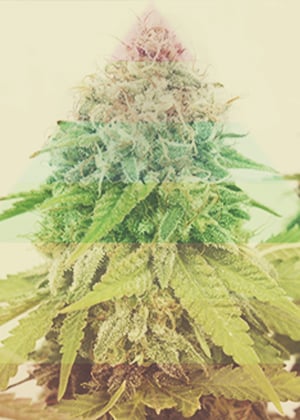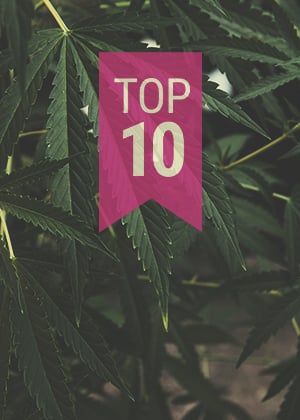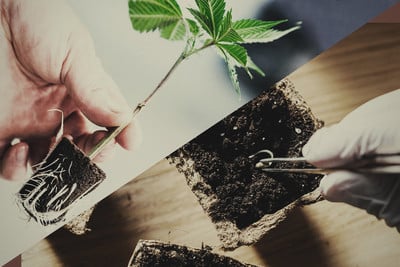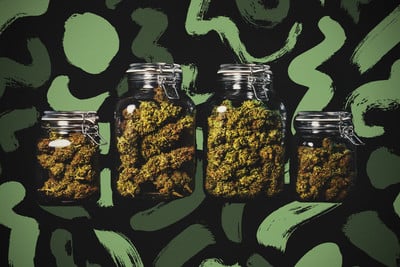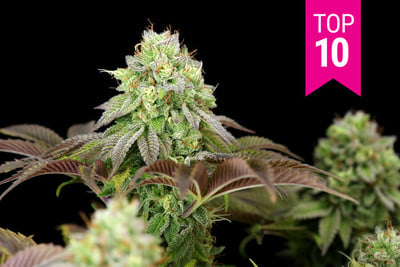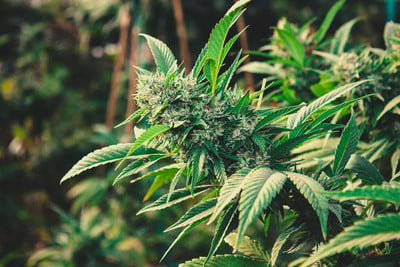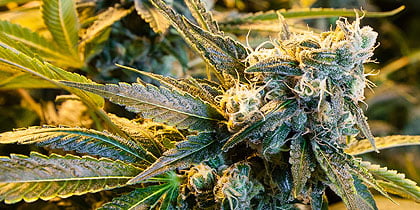Everything You Need To Know About Feminized Cannabis Seeds
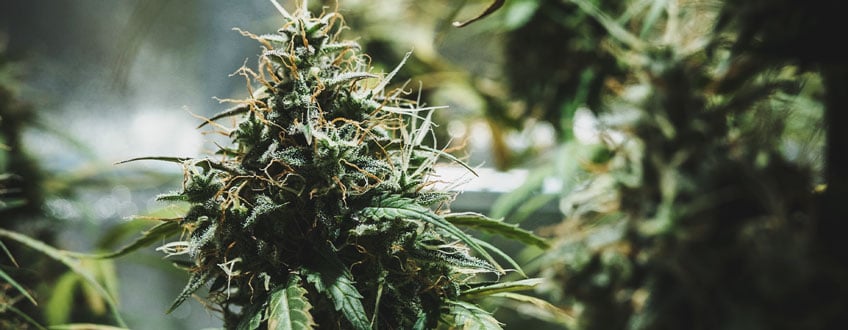
If you are shopping for cannabis seeds, you may come across all sorts of odd phrases and expressions. You may read about feminized cannabis seeds, photoperiod plants, autoflowers, males, females, hybrids, hermaphrodites, and much more. If you’re just starting out with growing weed, there’s no doubt all this can seem quite confusing.
But don’t fret! These concepts may seem intimidating, but they’re perfectly understandable once you get an explanation. While we want to explain everything at once, we’ll go one at a time, focusing on feminized seeds for today.
Contents:
- What are feminized seeds?
- Sativa, indica, hybrid, and ruderalis strains
- Fast-flowering cannabis
- The importance of terpenes in cannabis
- How to grow feminized seeds
- Other essential terminology and concepts
- Top feminized cannabis strain families
- Top feminized cannabis families
- How to select the best cannabis seeds for you
- Top cannabis strains you need to try
What Are Feminized Seeds?
Until not too long ago, if one was growing cannabis from seed, there was always a 50% chance each plant would be male. However, only female plants grow buds rich in cannabinoids such as THC and CBD.
Male plants produce seed pods, and, if they stick around long enough, they’ll pollinate the female plants and dramatically reduce their yields. Because of that, those growing regular seeds had to identify the sex of their plants as soon as possible in order to cull the males.
Then, the creation of feminized cannabis seeds in the 1990s revolutionised cannabis cultivation. Feminized cannabis seeds are genetically engineered to only become female plants, and they almost always (99.9%) do so. Eliminating the game of chance, this advancement made growing cannabis much easier, as well as more economical.
Feminized seeds tend to be designed to produce photoperiod plants. Photoperiod cannabis blooms depending on the daylight/darkness hours. Out in nature, cannabis starts to flower at the end of summer when the days get shorter. Indoors, photoperiod cannabis is kept in the vegetative phase until the grower is ready to induce bloom by reducing light hours.
Feminized Cannabis Seeds at a Glance
• High amount of cannabinoids compared to male cannabis. Strains are often bred for maximum potency and aroma.
• Seeds are 99.9% feminized, so plants will almost always develop into females.
• No need to check sex of plants, and no need to discard male plants.
• Feminized strains are usually photoperiod strains, meaning they’re light cycle-dependent.
At Royal Queen Seeds, all feminized seeds are labelled and categorised as such, so you won’t get confused when making a purchase.
Who Uses Feminized Strains and Why?
High-quality feminized seeds on the market today most often produce plants rich in THC. As the main psychotropic component in cannabis, all types of cannabis users enjoy the cannabinoid for the powerful high it initiates.
- Recreational users enjoy the stoning, relaxing, euphoric, or uplifting high induced by feminized strains. Given the vast variety of options out there, users can find some chill time in the evening or enjoy an energetic daytime buzz, depending on what they’re after. Also, since many strains feature different ratios of cannabinoids, terpenes, and sativa/indica genetics, you can experiment with different feminized strains to find a sweet spot in terms of effect.
- Those who use cannabis for holistic purposes also choose feminized strains for their pronounced effect. They may find that the THC lifts their mood and helps them wind down in tense situations, or simply takes the edge off whatever symptom they’re dealing with. Users also report that THC helps them achieve a good night’s sleep, along with other benefits.
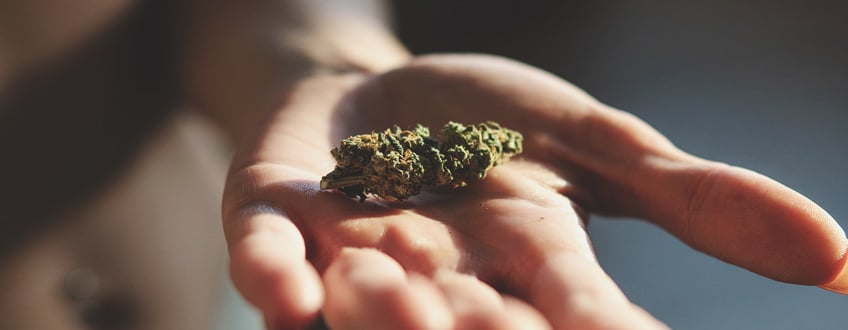
Sativa, Indica, Hybrid, and Ruderalis Strains
There are a few distinct types, or subspecies, of cannabis. The two major categories are sativa and indica, but there are also hybrid and ruderalis strains to consider.
In the past, it was believed that cannabis’ effects were contingent on what family a strain belongs to—whether it is more indica or sativa. Indicas were thought to produce a heavy “stoned” feeling while sativas were said to produce an energising high better suited for the day. Recently, however, evidence is mounting that the effect of a given strain has more to do with the terpene profile of a strain—not the subspecies it belongs to.
Spoken differently, some indicas can have an uplifting effect and some sativas can be relaxing, meaning things are not as straightforward as once believed. To find out about the particular effects of a strain, it’s recommended to read strain descriptions before making a purchase.
Where there are more distinct differences between the subspecies, however, is in their growth and morphology:
• Indicas grow short and bushy, with wide leaves. They’re often quite robust, and grow in many environments.
• Sativas grow taller, slimmer, and with thin, elongated leaves. These sun-loving plants usually do best in a hot climate. The flowering time is usually longer compared to indicas.
Most cannabis strains these days aren’t pure indicas or sativas. Rather, they are hybrids combining indica and sativa characteristics, and thus their growing characteristics vary.
There is another, often unmentioned subspecies to consider called Cannabis ruderalis. Ruderalis strains are “weed-like” and grow wild in northern regions like Siberia. What’s interesting, though, is that ruderalis is naturally autoflowering. As a result, breeders can use ruderalis genetics to make autoflowering varieties of classic photoperiod strains.
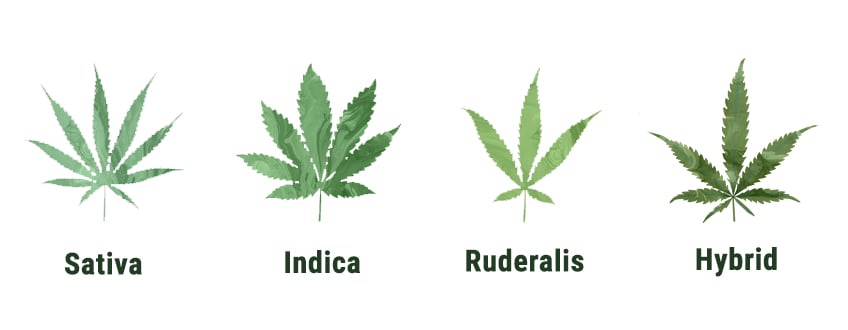
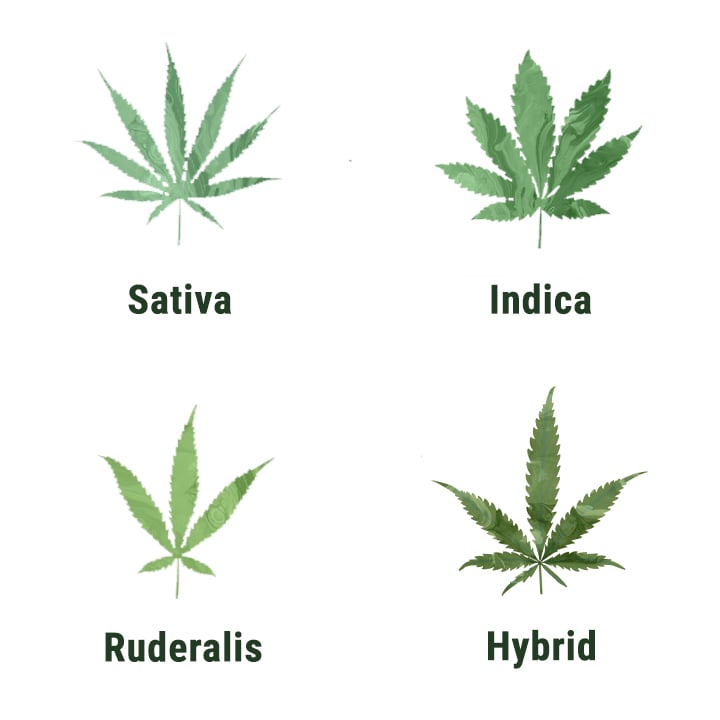
Fast-flowering Cannabis
Many cannabis strains require at least 60–70 days to mature their buds, with some taking even longer. For growers in regions with short summers and rainy autumns, this can be problematic. If plants need to be kept outside late into October, the buds are bound to get wet and mouldy.
Fast-flowering strains have been bred to help with this issue. They can be ready to harvest after a short 6–7 weeks of bloom, meaning cultivators can bring them in during mid/late-September with little risk of rain destroying their harvest.
Most of the time, fast-flowering strains are bred by crossing a photoperiod strain with a ruderalis/autoflowering one. However, fast-flowering strains are different from autoflowering strains, the latter of which blooms based on age instead of light cycle.
The Importance of Terpenes in Cannabis
As mentioned, recent research suggests that the specific effects of cannabis are not just due to cannabinoids, but are likely also influenced by aromatic compounds known as terpenes. More research in this area is needed, but it would explain why some strains, despite having identical THC:CBD ratios, have different effects.
What is known, though, is that terpenes (limonene, myrcene, pinene, etc.) give cannabis strains their distinct taste and aroma. They’re why one cannabis strain will smell fruity when another smells citrusy, floral, sour, or woody.
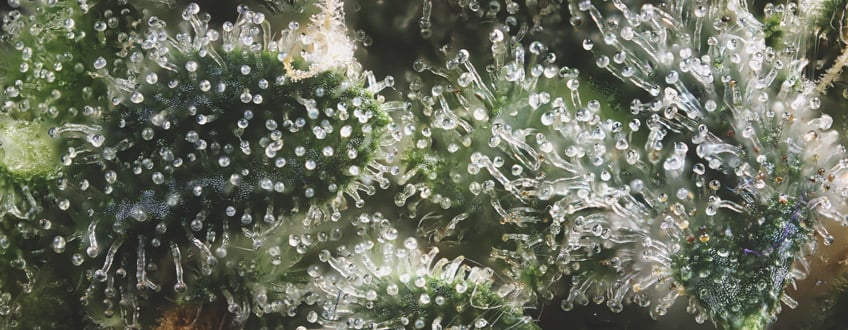
How to Grow Feminized Seeds
We’ve already mentioned how feminized seeds are easier to grow than regular seeds. That might be enough for you to let your guard down, but don’t be so care-free. As with male photoperiod plants, growing feminized cannabis comes with specific challenges, too.
1. Indoors Vs Outdoors
When growing indoors, manually adjusting your light/dark schedule is necessary. Growers will usually do this when plants have reached an appropriate height (about ½ of the desired final height). Simply enough, this is because plants will often stretch early on in their flowering phase, so they need room to grow appropriately.
To initiate flowering of feminized cannabis indoors, the grower will switch the lights to a 12/12 schedule. The longer dark period will simulate autumn conditions and trigger the plants to start flowering.
Outdoors, planting your feminized cannabis in an optimal climate and during the right season is pivotal. Why? Because sunlight hours change depending on the season, and your plants need a specific schedule to thrive. To satisfy this need, you will usually want to plant them in spring (when there’s no frost) and harvest in autumn.
2. How Much Time Do I Need to Grow Feminized Cannabis?
Whether you’re growing indoors or outdoors, the timing, as always, depends on the strain. Some varieties, like indicas, grow relatively fast, with short flowering periods of 6–7 weeks. Other strains, such as Hazes, take double the time to flower.
If you want to harvest in the quickest time possible, plant fast-flowering varieties or feminized autoflowers. Some of these are ready only 60 days after germination.
3. Can You Grow Different Feminized Strains in the Same Grow Room?
It’s possible to grow different strains in one grow room, but it comes with a learning curve.
There are numerous reasons for this. Different strains can grow to different heights, have different nutrient requirements, and will be ready at different times. You may also need to use plant training techniques (pruning, cropping, etc.) to keep an even canopy under your grow light.
4. Optimal Temperature and Humidity for Growing Feminized Cannabis
In general, feminized cannabis likes moderate temperatures (around 21°C) for healthy growth. Any extremes can lead to stunted growth and other troubles. For best results, if you don’t live in an optimal climate, grow in an environment where you have temperature control. If necessary, use a heater and/or cooling system.
The optimal humidity level for your cannabis plants will depend on their stage in the life cycle. As a rule, seedlings and plants in the vegetative phase prefer a more humid environment. Reduce relative humidity to 40–50% when plants are flowering to reduce the risk of mould.
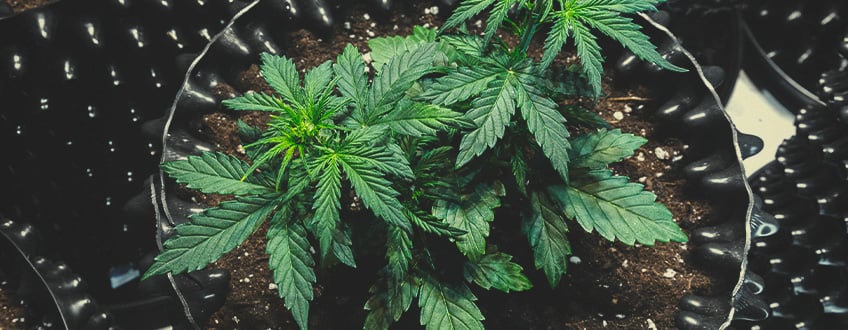
5. What Kind of Soil Should You Use for Feminized Seeds?
Cannabis does best when grown in nutrient-rich, well-aerated, and well-draining soil. Most shop-bought soil is already optimised for growing cannabis. If you’re using natural soil, you can amend it with perlite, coco, vermiculite, compost, or worm castings so it’s better suited for weed.
6. What Kind of Nutrients Should You Use for Feminized Cannabis Plants?
For healthy growth, your feminized cannabis plant will need various nutrients. To start, it’ll need nitrogen, phosphorus, and potassium, the three major “macronutrients”. It will also need micronutrients including calcium, iron, magnesium, copper, and various others.
Commercial cannabis nutrients usually contain all the required macro and micronutrients, but make sure you feed according to the recommended dosages (or slightly less).
Make note that cannabis has different nutrient requirements during the vegetative and flowering stages. Because of this, cannabis fertilisers often come in two varieties; one for growth, one for flowering.
7. What Kind of Water Do Feminized Cannabis Plants Need?
When watering cannabis growing in soil, it’s important that your water/nutrient solution has the optimal pH level of around 6–7. Otherwise, your plants won’t be able to take in nutrients even if they’re there. Fortunately, you can adjust your tap water to the right pH level with a few drops of pH down or up products.
8. Plant Training — What is It and Why Should You Do It?
Plant training is how growers keep their cannabis at the appropriate size and shape. It involves various techniques, including topping, pruning, super-cropping, pinching, and/or defoliating your plants. The purpose of all these, one way or another, is to optimise growing space and light exposure to obtain better yields.
Plant training can stress out your cannabis and may temporarily halt its growth. For that reason, most types of training are not suitable for feminized autoflowers due to their limited lifespan. Feminized photoperiod cannabis, however, doesn’t have this limitation, and can easily recover.
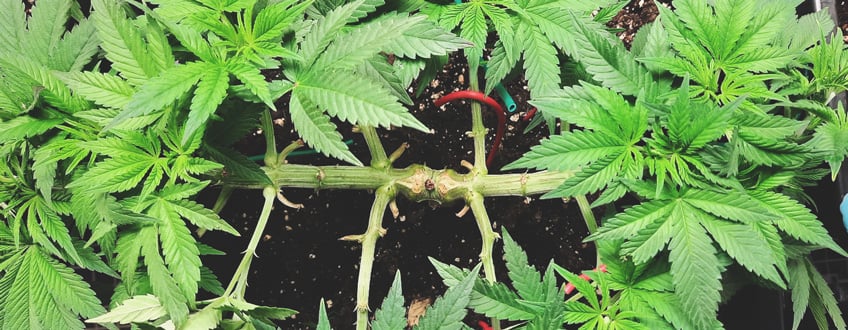
Other Essential Terminology and Concepts
We know there are a lot of different terms associated with cannabis, and they’re easy to mix up. To clear things up, we’ve decided to end this piece with a breakdown of essential cannabis terminology and concepts.
How Cannabinoids Are Made in Cannabis
Cannabinoids, such as THC, CBD, and the many dozens of others, don’t just appear from nothing as the plant is growing. In fact, a lot of internal chemistry is involved in their creation.
One of the first steps in the process is the production of a chemical called geranyl pyrophosphate inside the plant. This substance then interacts with olivetolic acid to create cannabigerolic acid, or CBGA.
This compound is the building block for the main cannabinoids, but the process isn’t done yet. CBGA first needs to combine with specific enzymes and, through biosynthesis, convert into the acidic forms of the cannabinoids we know. Left with THCA, CBDA, and CBCA, we're almost at the end of the journey.
Only one more step is needed to turn these cannabinoid acids into THC, CBD, and CBC, respectively: decarboxylation. The term simply refers to the process of heating up cannabinoid acids to convert them into "active" cannabinoids. That, of course, happens automatically when you're smoking or vaping.
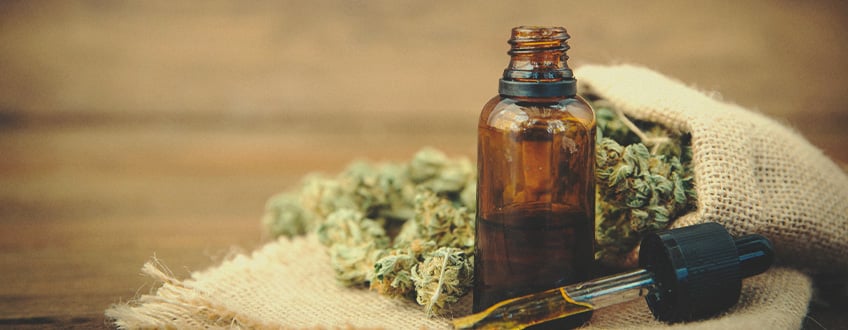
How THC Affects the Endocannabinoid System
So, how do cannabinoids even work when they enter your system?
The two most commonly known cannabinoids are THC and CBD. THC is responsible for the characteristic cannabis high, while CBD, although purported to have various beneficial effects, doesn’t induce a high.
These cannabinoids, along with the 100+ others in cannabis, interact directly or indirectly with the human body’s endocannabinoid system. The endocannabinoid system, which largely consists of cannabinoid receptors, mediates many physiological functions, including mood, sleep, immune response, and more. Endocannabinoids (which we make in our own bodies), along with cannabinoids from plants, can bind to these receptors to produce effects.
One of the main endocannabinoids is anandamide, also called the “bliss molecule”. It functions as a neurotransmitter, sending messages between nerve cells. These interactions influence pleasure, memory, thinking, concentration, sensory input, time perception, and more.
THC, as it turns out, has a very similar chemical structure to anandamide. And, just like it, it binds to cannabinoid receptors, specifically CB1 receptors. Thanks to these pathways, consuming cannabis can affect us in multiple profound ways.
Why Does Cannabis Produce Terpenes?
Cannabis, as well as other plants, produces these aromatic substances as a natural defence against pests, and to attract pollinators. This is also evidenced by cannabis’ tendency to develop more intense aromatic compounds when dealing with an infestation.
What is Sinsemilla?
“Sinsemilla” is a Spanish word meaning “without seeds”. The word stems from a long time ago, when a lot of weed on the black market was low-quality and full of seeds. Back at that time, “sinsemilla” weed was really special, and it was a synonym for the highest-quality product.
These days, with modern genetics and the advent of feminized cannabis seeds, seedy buds have fortunately become rare. Now, pretty much all decent cannabis is sinsemilla, so the word has lost its original meaning. It’s good to keep in mind, however, as it’s still sometimes used to describe quality cannabis.
What Are Hermaphrodites?
Aside from the two typical cannabis plant sexes, your plant could also be a hermaphrodite. Should this happen, the plant will exhibit both female and male characteristics. Namely, as the plant matures, it will develop both buds and pollen sacs. As a result, you may end up with poor yields of poor-quality weed full of seeds.
The most common reason this happens is plant stress. It could be due to an interruption in the dark period during flowering, which triggers “re-vegging”, or it could be other stress factors in the environment, including pests, extreme temperatures, and shifts in humidity.
Growing cannabis in a controlled environment is the best way to prevent this. Keep plant stress at a minimum, and you’ll reduce the chances of hermaphroditism significantly.
What Are Landraces?
Landraces are types of cannabis that developed in their natural environment. One could also say these are pure, original cannabis strains. Some landraces originated in the Hindu Kush region of Afghanistan and Pakistan, but they can also be found in Africa, Jamaica, Asia, South America, and Russia.
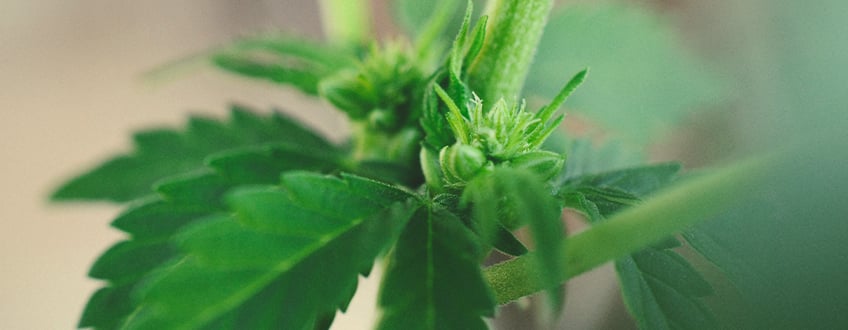
Top Feminized Cannabis Strain Families
There are hundreds of feminized hybrids out there, but they almost all root from a handful of main families. Like human families, each one has a common thread of traits that will tell you where it comes from.
🍁 Kush
Cannabis strains with Kush genetics will have dank aromas and—since they’re usually indica—tend to offer a deeply relaxing couch-lock effect. Depending on the variety, it’ll also feature terpenes with earthy, woody, pine, and citrus aromas.
🌫️ Haze
Haze strains are for sativa fans that appreciate a heady cerebral buzz and daytime blazing. Their terpene profiles encompass many flavours, from sweet and lemony to coffee and chocolate.
🔮 Afghan
Cannabis with Afghan genetics usually has spicy, earthy, and fresh flavours. Most strains are indica-leaning, so they’ll give you a relaxing, happy, couch-locking high perfect for enjoying at night.
🍦 Gelato
Strains made with Gelato, a prime example of the best Cali weed, usually shine with a fruity, dessert-like aroma. Many of them are hybrids, or at least feel like it, so you can expect both a euphoric head high and a relaxing sensation.
🍪 Cookies
Cookies strains blend a euphoric and social effect with a touch of physical relaxation. Expect earthy and sweet aromas with hallmark cookie flavours, all melding together into a mouth-watering combo.
🍇 Blueberry
Strains descended from Blueberry often feature a terpene profile that lends rich, sweet, and fruity berry notes. With genetics coming out of the US West Coast, Blueberry strains are renowned for their deeply relaxing and soothing effects.
💜 Purple
Cannabis strains made with Purple genetics display reddish/purple colours that are more vivid with cooler nighttime temperatures during late flowering. The terpene profile combines dank hash aromas with earthy, lemon, and pine scents. As most purple strains are indicas, their effects are usually narcotic and relaxing.
🍌 Banana
The original Banana is indica-dominant (70%) and famous for its rich terpene profile, which showcases sweet banana aromas and flavours. The strain is massively potent (25% THC) and delivers a powerful relaxing effect. Its descendants, thankfully, share these traits.
🦨 Skunk
Skunk is cherished by many cannabis aficionados for its “skunky” aroma. This strain has also been used as the foundation for a wide variety of strains on the modern market. Strains that boast Skunk genetics typically have a sleepy effect with a happy and uplifting note.
🧀 Cheese
The original Cheese, an indica-dominant hybrid made from the aforementioned Skunk and Afghan, is famous for its pungent ripe cheese scent. Cheese-derived strains shine with hallmark cheese-y olfactory notes and a balanced effect, combining euphoric highs with soothing stoned effects.
Top Feminized Cannabis Families
Top Feminized Cannabis Families
How To Select The Best Cannabis Seeds For You
How To Select The Best Cannabis Seeds For You
Top Cannabis Strains You Need To Try
Categories
Growing Feminized


























